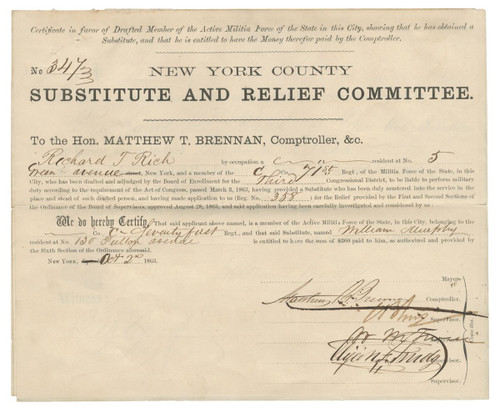Walter Bedell Smith (1895 – 1961). Senior Office in the United States Army. Served as Chief of Staff to Dwight D. Eisenhower during the Tunisia Campaign, the invasion of Italy and at SHAEF during the campaign on Western Europe. He signed the German Surrender document on behalf the Allied High Command.
General Smith played a pivotal role in negotiating the surrender of Nazi Germany during World War II. As the Chief of Staff to General Dwight D. Eisenhower, who was the Supreme Allied Commander in Europe, Smith was responsible for coordinating the surrender process on the Western Front.
One of the most significant negotiations led by General Smith was with German General Alfred Jodl, who represented the German High Command. These negotiations took place in the early hours of May 7, 1945, in Reims, France. General Smith, along with Allied representatives, including British General Bernard Montgomery and Soviet General Ivan Susloparov, accepted the unconditional surrender of German forces in Europe. The surrender took effect on May 8, 1945, which became known as Victory in Europe (VE) Day.
General Smith's diplomatic and organizational skills were crucial in ensuring a smooth and coordinated surrender, and his efforts helped bring an end to the war in Europe. His role in negotiating the German surrender exemplified his ability to work effectively with Allied partners and manage complex diplomatic and military operations on a grand scale.
Typed Letter Signed. Two pages, 8” x 10”. On Embossed letterhead of the Foreign Service of the United States Embassy. Moscow, November 1, 1947. To Mr. Denys Myers, International Organization Affairs, Office of Legal Advisors, State Department, Washington
“I have, as you requested, reviewed the account of the act of the military surrender of Germany. In so far as I am able to judge, the text is correct. As a matter of interest, however, I might comment on this statement page 23 of the text and the amplifying statements which follow it:
“It has been said that this active military surrender was used to close out the German adventure in international brigandry because the instrument of the unconditional surrender of Germany could not be found when it was needed. Such a statement is not accurately reflect the facts which come out to the same effect.”
“As a matter of actual fact, the draft instrument for the unconditional surrender of Germany, prepared by the European Advisory Commission as of July 25, 1944 and approved by the governments concerned, was transmitted to the Supreme Headquarters Allied Expeditionary Force, by Mr. Winant shortly after we made our landing in Normandy, and it reached Supreme Headquarters at a time when we were fighting for the permanent foothold on the Normandy coast. It was sent direct to us by Mr. Winant and not through the channels by which approved recommendations of the European Advisory Commission was normally transmitted, and for this reason I myself and other officers of the SHEAF staff failed to note the fact that it was a governmentally approved recommendation. I recall glancing at the document, thinking that in view of the military situation it was a bit of extremely long range planning, and sending it to the civil affairs division of the staff without further consideration.”
“Ten months later when the actual surrender of the German Armed Forces seemed imminent, we at SHAEF completely forgot the existence of this document, and the staff had to work under considerable pressure to prepare the surrender document which actually was used. Our draft was transmitted to the United States, United Kingdom in Soviet governments, and was approved by them without reference to the previously approved text prepared by the European Advisory Commission. It was not until several days after the surrender, when I was talking with ambassador Winant on the telephone and he asked me why we had not used the European Advisory Commission’s text, that I finally recalled having received months before; and I was even then under the impression that it was not an approved document.”
“If we had remembered the existence of this prior document, it would’ve saved us a great deal of trouble. It is easy for a field headquarters, which moves rather frequently in the several echelons of which are often widely separated, to make a slip like this, but I have often wondered to what extent Soviet suspicion was aroused by our substituting in an entirely new paper under conditions of emergency, and also why the Soviet government made no reference to the previous document to which they had given their approval in London.”
“I have only one other comment, which also is not a correction. The first paragraph on page 22 indicates some elaboration of the surrender document signed at Berlin on May 8 over that previously completed at Rheims on May 7. As I recall it, the document signed at Berlin was identical with the one signed at Rheims except for the change of the three or four words which were, of course, the concession to Soviet prestige, and which did not alter the text in any respect. It was probably a mistake on our part to have agreed to any change, as the surrender accomplished at Rheims was complete and unconditional, and the subsequent ceremony at Berlin added nothing to the finality of the transaction.”
A highly interesting account by Smith as to the manner in which the documents for Germany’s unconditional surrender ending World War II were created and signed. Smith served as the signatory to the Surrender representing the Allied High Command. Signed at the conclusion by Smith.








